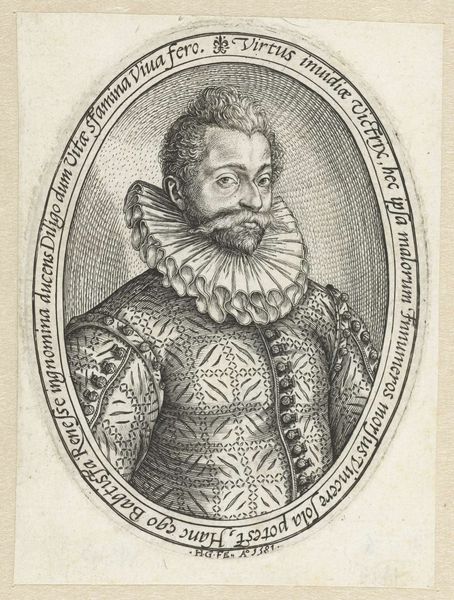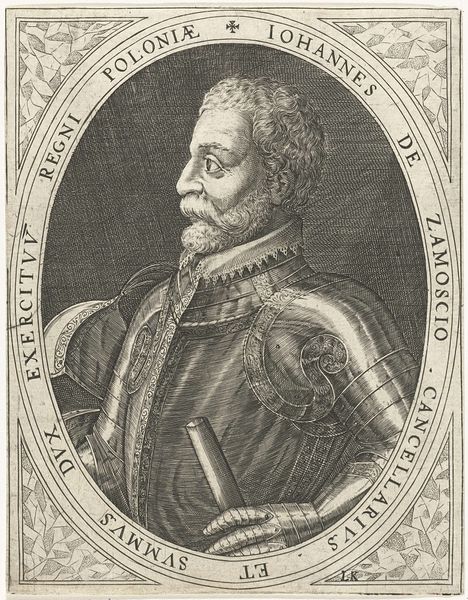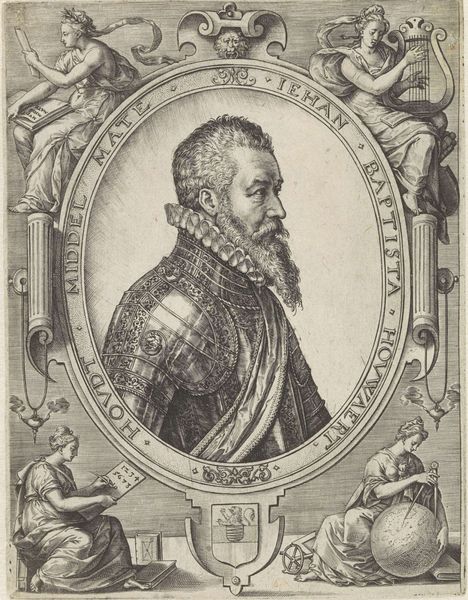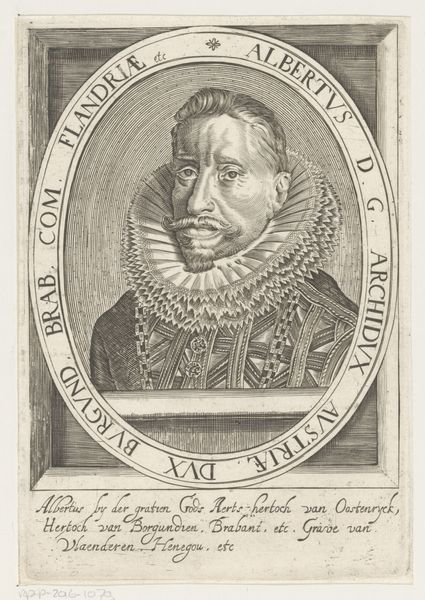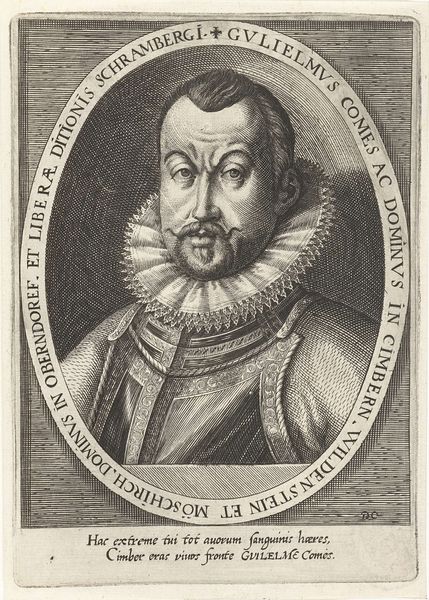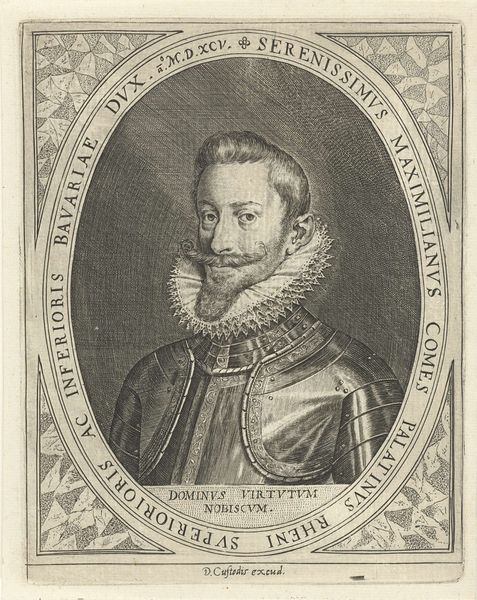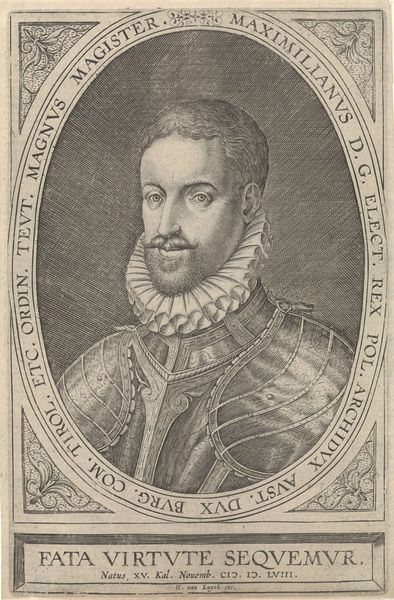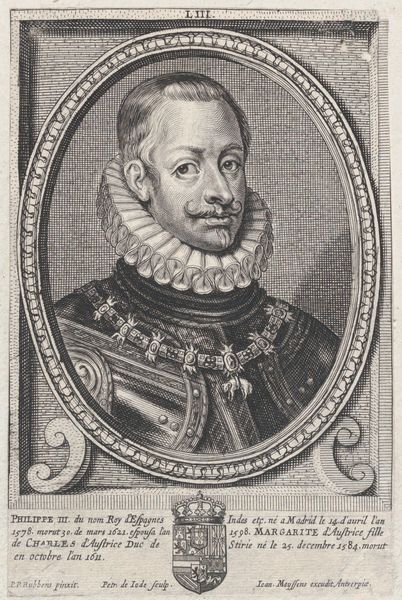
print, engraving
#
portrait
# print
#
old engraving style
#
figuration
#
11_renaissance
#
history-painting
#
northern-renaissance
#
engraving
#
columned text
Dimensions: height 168 mm, width 120 mm
Copyright: Rijks Museum: Open Domain
Curator: This engraving, dating from somewhere between 1579 and 1615, depicts Philip William, Prince of Orange. It's attributed to Dominicus Custos, a fascinating figure working within the Northern Renaissance tradition. Editor: The fine lines forming this portrait seem incredibly precise, creating an image of stern dignity. It appears as though layers of armour and ruff are constructed to defend and insulate this regal figure. Curator: That precise detail, indicative of the engraving process, really underlines the performative aspect of power. Consider how images like this circulated, shaping perceptions of Philip William and legitimizing his place in the tumultuous political landscape of the time. We have to consider his positionality as the eldest son of William the Silent during the Dutch revolt. Editor: Absolutely. It is important to remember that the materiality matters: prints like this weren’t simply decorative, they were tools. The act of engraving, the skilled labor involved in producing multiples, disseminated ideas widely across geographic boundaries. The choice of clothing, the presentation of armour, it’s all crafted for a purpose. Curator: And let’s consider the implications of accessibility! Though images like these served the elite, their production involved many hands, creating a point of intersection, regardless of social stratum. Consider the labor required to print, distribute, and even collect such an object in early modern society. Editor: Indeed. This single image really does bring forward themes of labor, production, and consumption. Each individual piece provides its own historical lens on art. Curator: Ultimately, looking at Philip William through this lens gives us a chance to grapple with the layered meanings embedded in images of power from the Northern Renaissance, especially considering issues of identity and representation that continue to reverberate today. Editor: Exactly, it moves the viewing past aesthetic appraisal and encourages questioning the image as a construct, actively shaped by production processes and prevailing historical narratives.
Comments
No comments
Be the first to comment and join the conversation on the ultimate creative platform.



